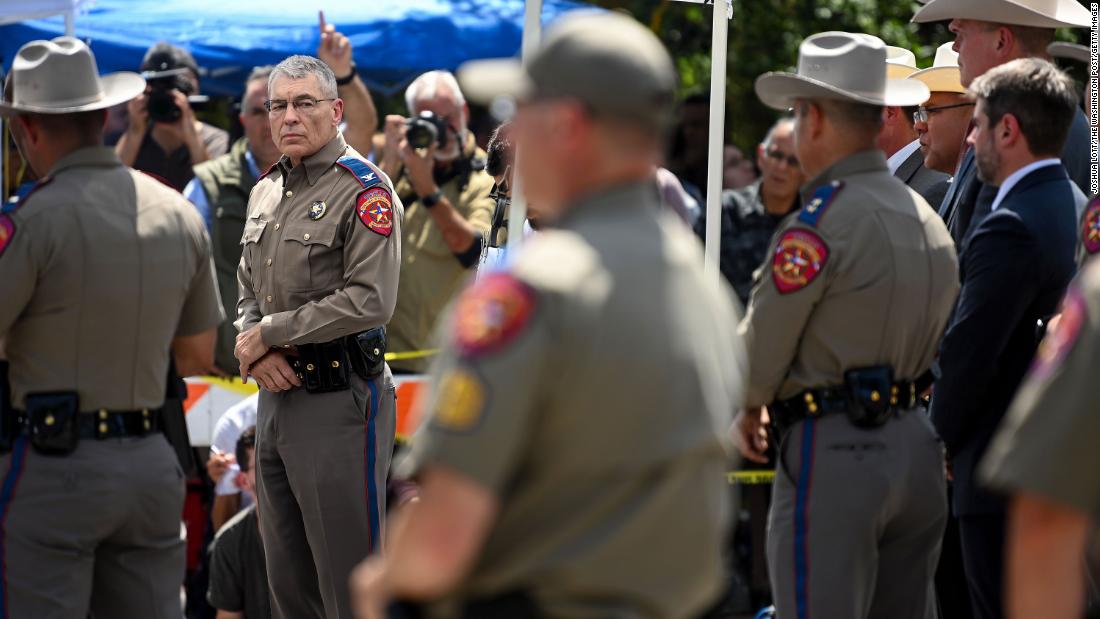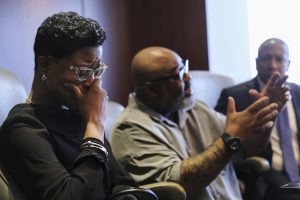
While 18-year-old Salvador Ramos was inside adjoining classrooms, a group of 19 law enforcement officers stood outside the classroom in the school for roughly 50 minutes as they waited for room keys and tactical equipment, CNN has reported. Meanwhile, children inside the classroom repeatedly called 911 and pleaded for help, Texas officials said.
“It was the wrong decision. Period. There’s no excuse for that,” McCraw said of the supervisor’s call not to confront the shooter.
‘Every second counts’ during active shootings
Thor Eells, executive director of the National Tactical Officers Association (NTAO), said the commander’s determination was “100% flawed.” A barricade calls for officers to slow down their response, analyze whether the subject is alone and negotiate, he said.
“If you’re in a classroom with innocent victims and I know that shots have been fired, I need to engage you. Even if you stopped firing, I’m going to make entry into the room so we can begin to administer life-saving aid to any potential victims,” Eells said.
The delayed police response in Uvalde runs contrary to well-established, commonly taught active shooter protocol established after the Columbine school shooting of 1999, Eells said.
“Even under fire, officers are trained to go to that threat because every second counts,” said Jonathan Wackrow, a CNN law enforcement analyst. “What we saw here was that delay cost children their lives, full stop.”
As the Columbine shooting unfolded, Colorado police waited roughly an hour after gunfire erupted in the school for SWAT teams to arrive, during which two young men killed 13 people.
Prior to Columbine, law enforcement was commonly trained in tactical principles called ICE, which stood for isolate (the suspect), contain (the suspect) and evacuate (the scene). After engaging in ICE protocol, police would request a specialized unit from tactical SWAT teams that would respond and engage with the suspect or suspects, according to Eells.
The Columbine shooting forced law enforcement to reprioritize their focus in responding to active shooter situations. After Columbine, police began acting on behalf of those who are in harm’s way rather than protecting themselves, Eells said. First responders also started to undergo tactical training to prepare for active shootings, taking some of the responsibility out of the hands of SWAT teams, he added.
There are no national guidelines to standardize law enforcement’s training and response to active shooter situations. The NTAO was the first to develop an active shooter curriculum and training courses, which have since been adopted or modified by other training organizations around the country, Eells said.
The curriculum includes safety priorities to guide decision making while officers respond to active shootings, based on a person’s proximity to injury or death. They have been instructed in all 50 states, according to Eells.
All training prioritizes engaging the subject first. The safety priorities list deems hostages and innocent civilians as top priority, followed by law enforcement and then suspects, Eells said.
As their tactics evolved, law enforcement recognized that waiting even a few seconds to respond during an active shooter scenario is potentially catastrophic, Eells said. This prompted police training organizations to develop a more rapid response strategy. Now, officers are taught to do everything they can to stop the shooter as quickly as possible and even bypass helping the injured, Eells added.
“This is unfortunately an ongoing and continual learning process,” he said. “There’s a very good chance that there’s going to be some critical lessons learned out of Uvalde, which may then find their way into our recommendations of how you might alter your response.”
Case shows how rapid response saves lives
Eells pointed to a 2013 shooting at a Colorado high school that shows how a rapid response by police can lead to vastly different results. The shooting transpired within two minutes, during which a male high school student ignited a Molotov cocktail and fired his pump-action shotgun in the school, fatally shooting a 17-year-old girl.
But the attack might have resulted in many more casualties had it not been for the quick response of a deputy sheriff who was working as a school resource officer at the school, CNN previously reported. Upon learning of the threat, the deputy ran to the shooter, identified himself as a county deputy sheriff and told people to get down. While he was containing the scene, the shooter took his own life.
Ramos was not confronted by police before he entered the school, DPS Regional Director Victor Escalon said on Thursday.
While active shooter protocols are widely recognized among the 18,000 law enforcement agencies in the country, the fundamental issue is the decentralized nature of police standards at the local, state and federal level, according to Maria Haberfeld, a professor of police science at John Jay College.
“The way the Uvalde officers responded aligned with the fact that they likely did not have proper training,” Haberfeld said. Local police agencies typically rely more heavily on specialized tactical units, she said.
The manual states: “Officer’s first priority is to move in and confront the attacker. This may include bypassing the injured and not responding to cries for help from children.”
The safety priorities list, Eells said, would have served to guide officers in that moment. The decision to wait in the hallway rather than breach the classroom door kept innocent civilians in danger while benefiting the shooter, he said.
“All of the time that they were standing in the hallway,” Eells added, “even while they were evacuating children, simultaneous to that they should have been engaging with the suspect.”

